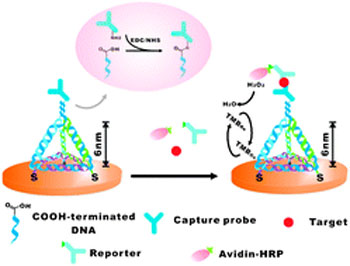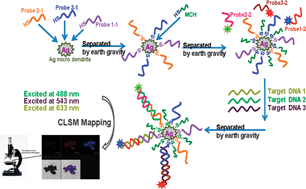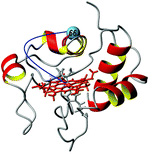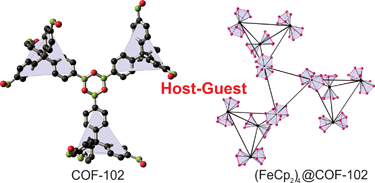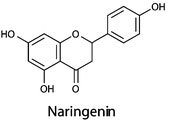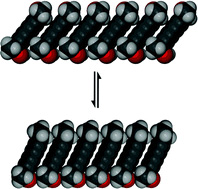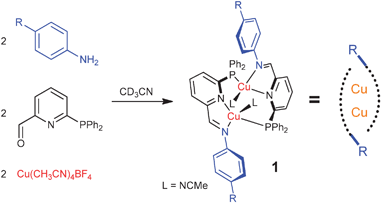A highly sensitive and regenerative electrochemical immunosenor has been created by scientists in China, by combining a 3D tetrahedra-structured probe (TSP) and a DNA-bridged antibody immobilisation technique.
| Chunhai Fan and colleagues from the Shanghai Institute of Applied Physics collaborated with scientists from the Nanjing University of Science and Technology. Together the team alleviated common problems associated with electrochemical biosensors, such as poor reproducibility and orientation of surface confined molecules, by using the TSP. Next, the team assembled the TSP onto the gold surface with high reproducibility, resulting in controlled spacing and orientation of the DNA probes. Antibodies were then reversibly anchored to the nanostructured surface via a DNA bridge, producing the immunological (iTSP) platform. |
Fan believes that the iTSP platform will be a promising tool for various immunological assays, as well as DNA-programmed protein microarrays for future proteomic studies, and here’s a summary of the reasons why:-
-
This paper shows a simple one-step process to create the iTSP, which leads to a stable and reproducible surface for the anchoring of antibodies.
-
Conjugated antibodies are separated from the surface by a relatively thick iTSP layer, preventing possible surface-induced effects.
-
The protein resistant ability of iTSP is crucial for the proper orientation of the antibody conjugates and minimizes nonspecific adsorption that is often found in immunosensors.
-
The hollow structure of the tetrahedra makes it possible for redox molecules to easily penetrate the thick layer, supporting sensitive electrochemical detection.
-
The iTSP platform supports regeneration of the surface by using mismatched complementary DNA, which forms the basis of reusable immunosensors.
Fancy reading more? Then download the ChemComm communication, which will be free to access until the 24th June 2011.


